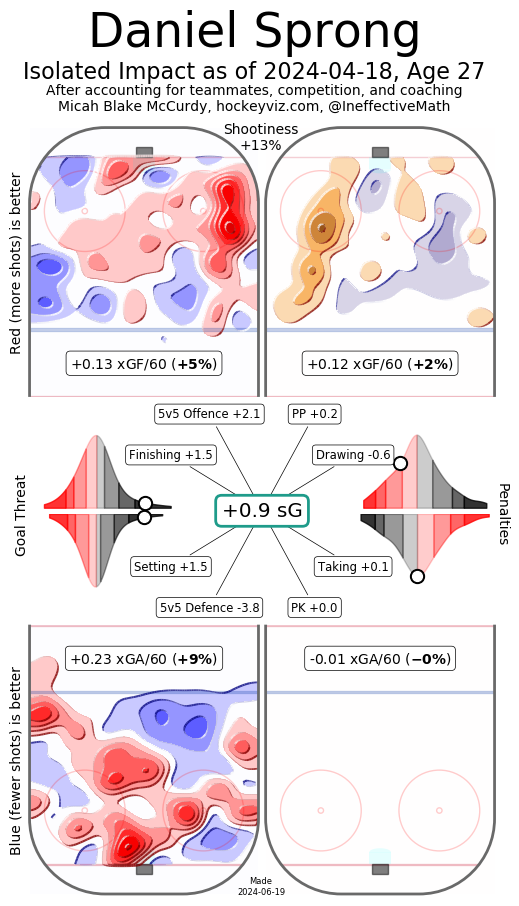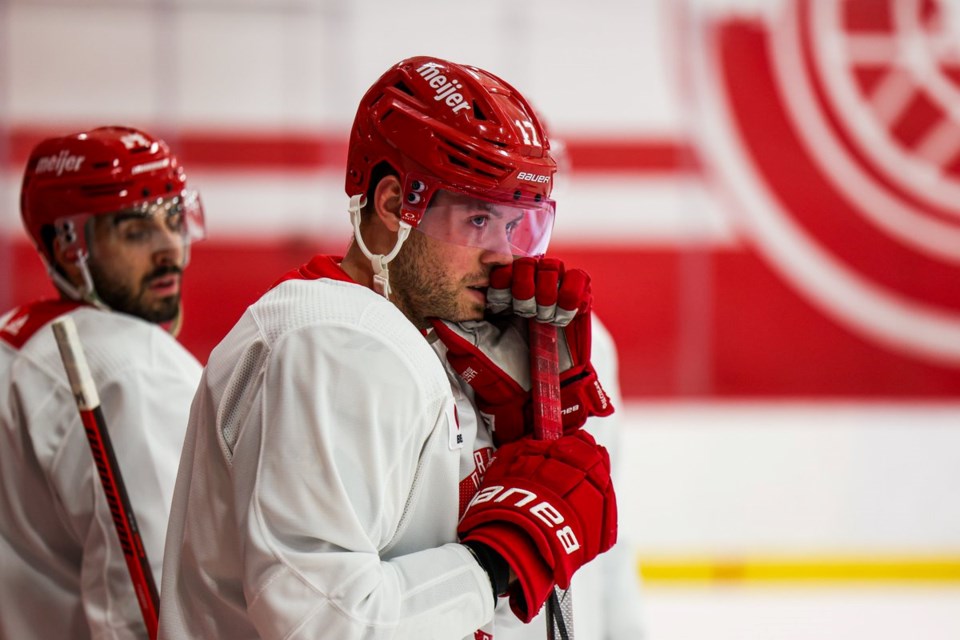It seemed like the Â鶹´«Ã½Ó³»Canucks might be done in free agency after getting rookie goaltender ArtÅ«rs Šilovs locked up to a two-year deal. With Šilovs' signing, the Canucks had a complete 23-man roster that was comfortably under the salary cap, enough to fit Tucker Poolman's $2.5 million cap hit without putting him on long-term injured reserve.
But the Canucks weren't done.
On Saturday, the Canucks signed one more free agent, inking right-shot winger Daniel Sprong to a one-year deal with a cap hit of $975,000.
Getting Sprong at under $1 million is some very nice work by general manager Patrik Allvin and his team. Contract projections for Sprong, who is coming off back-to-back 40+ point seasons, ranged from $3.378 million from to $4.092 million from , both with a three-year term.
Evidently, the interest in the 27-year-old winger was muted despite his solid offensive production. That gave the Canucks the opportunity to scoop him up three weeks into free agency at a bargain price.
Sprong's defensive issues kept him on the market
Sprong put up 18 goals and 43 points for the Detroit Red Wings last season and is a year removed from 21 goals and 46 points in just 66 games with the Seattle Kraken. So, why was he still available?
It's not complicated: while Sprong can create and finish off scoring chances, he is very defensively suspect.
The Red Wings heavily sheltered Sprong. Among forwards who played at least 300 5-on-5 minutes, Sprong had the lowest ice time on the Red Wings, averaging just 10:01 per game at 5-on-5. , Sprong had the lowest percentage of ice time against elite competition on the Red Wings, meaning he was kept from facing the opposition's top players as much as possible. To top it off, he also had the highest percentage of offensive zone starts on the team.
In other words, Sprong had the most sheltered minutes on the Red Wings last season.
It was for good reason. Despite being sheltered, Sprong was on the ice for the second-highest rate of shots against, the second-highest rate of scoring chances against, the highest rate of high-danger chances against, and the third-highest rate of goals against, all according to . Sprong put up points but the Red Wings gave up a lot more than he produced when he was on the ice.

From looking at reports out of Detroit, Sprong has a tendency to and cheat for offence, as well as get a bit careless with the puck on the breakout.
That's not a formula for defensive success.
That's the bad. Fortunately for Sprong and the Canucks, there's a lot of good to be had as well, and reason to believe that the Canucks can potentially get the most out of him.
Sprong can score at an elite rate
First of all, Sprong scores at a tremendous rate at 5-on-5.
Over the past two seasons, Sprong has averaged 1.26 goals per 60 minutes at 5-on-5. That's the 11th-highest rate in the NHL, a higher rate than Zach Hyman, Artemi Panarin, Mikko Rantanen, and Connor McDavid.
You can perhaps consider Sprong to be the anti-Mikheyev. Where Mikheyev did all sorts of little things right and was effective defensively, he just couldn't find the back of the net. Sprong isn't great in the details but can't help but put the puck in the net.
Beyond the goals, Sprong is also a highly effective playmaker. Over the past two seasons, Sprong has averaged one primary assist per 60 minutes at 5-on-5, which is 17th among NHL forwards — just behind Sidney Crosby and ahead of Evgeni Malkin.
Sprong is also effective on the power play, where he has 9 goals and 26 points over the past two seasons while primarily playing on the second unit for the Kraken and Red Wings. If he can provide more scoring punch to the Canucks' second unit, that could be a big boon.
The Canucks could easily use Sprong in a similarly limited role on the fourth line as the Red Wings did and get some depth scoring to support the team's top-end players. What's intriguing to consider is whether the Canucks can get even more out of Sprong.
Can Sprong become a legitimate top-six forward in Vancouver?
Sprong seems like the polar opposite of a Rick Tocchet player. He gets caught puck-watching, doesn't engage physically in the defensive zone, and makes careless turnovers. It's the type of thing that will drive the Canucks' head coach crazy and could see him benched in a hurry. This could very easily be another Andrei Kuzmenko situation.
But what if Tocchet can get through to Sprong and get more out of him defensively in his system? Or what if Tocchet can find a way to shelter Sprong while still getting him on the ice with elite linemates?
There's an opportunity to be had in the Canucks' top six. In theory, the Canucks have two forward pairings on their top two lines, with an open wing up for grabs. J.T. Miller and Brock Boeser form one pair, while Elias Pettersson will presumably have Jake DeBrusk as his primary linemate.
While Sprong's defensive issues likely preclude him from playing with Miller and Boeser, who were frequently used as a match-up line, what if Sprong could play with Pettersson and DeBrusk?
Let's keep in mind, the Canucks have a top-tier third line already together in the Good Job Boys — Conor Garland, Dakota Joshua, and Teddy Blueger. That's a line that can capably handle tough match-ups and defensive zone stats. Combine that with Miller and Boeser's tough minutes and there's the possibility to set up Pettersson's line with some easier minutes.
Not that Pettersson needs easier minutes — he's arguably the Canucks' best two-way forward — but he could feast on some easier match-ups, especially with an offensively creative player like Sprong and a finisher like DeBrusk on his wings.
It's at least something to consider as the Canucks head into training camp. And, if Sprong doesn't work out at all, either in the top-six or on the fourth line, he only has a $975,000 cap hit.
This is a low-risk, potentially high-reward bet for the Canucks. We'll have to wait and see if it will pay off.



